No products in the cart.
Blog
Intriguing Facts About Tether USDT – The Premier Stablecoin
Tether (USDT) has emerged as a prominent digital currency within the dynamic landscape of cryptocurrencies, drawing considerable attention. As one of the leading stablecoins, it stands apart by its mission to maintain a steadfast value, achieved through its connection to a reserve of assets, typically the U.S. dollar.
What sets Tether (USDT) apart from its crypto counterparts? In this exploration, we will uncover the enlightening facts about Tether USDT that provide deeper insights into its distinctive attributes, utility, and profound influence on the realm of digital currencies.
Tether was launched in 2014, not in 2015
Tether was indeed founded as Realcoin in July 2014 by Brock Pierce, Reeve Collins, and Craig Sellars. The rebranding to USTether and then to USDT occurred in November 2014, and the actual launch of Tether as a cryptocurrency took place in early 2015.
It was initially built on the Bitcoin blockchain using the Omni Layer protocol before later expanding to other blockchains such as Ethereum and Tron.
Tether (USDT) Is A Stablecoin
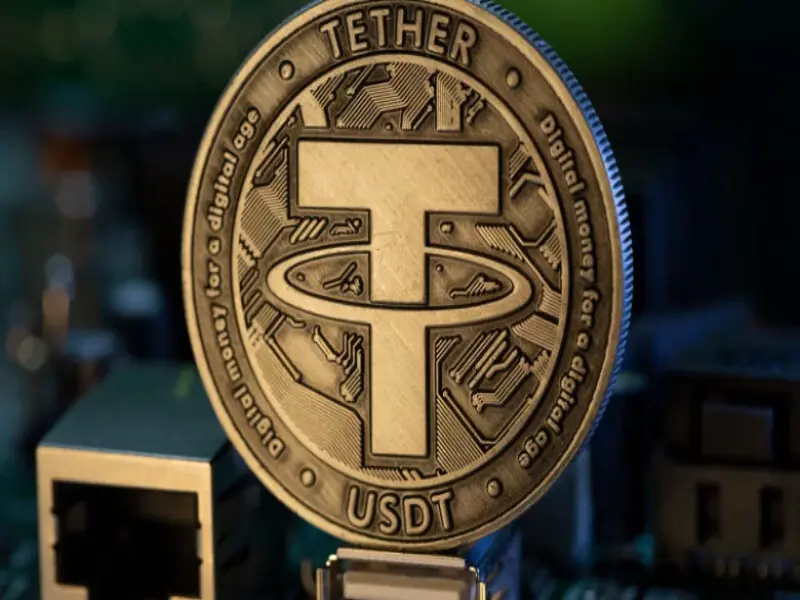
Tether is a cryptocurrency designed to maintain a stable value by being pegged to a fiat currency, typically the US dollar. This stability makes it a popular choice for traders and investors who want to protect their assets from the volatility often associated with other cryptocurrencies.
Tether was initially developed as a versatile digital token compatible with various blockchain platforms.
As a trailblazer in the stablecoin arena, Tether has introduced stablecoins linked to multiple fiat currencies, including the US dollar (USDT), Euro (EURT), Mexican pesos (MXNT), Chinese renminbi (CNHT), and even gold (XAUT).
This innovative digital currency technology simplifies international payments, eliminating the need for complex currency conversions and ensuring that value remains consistent across borders.
Tether has made it to TOP-3
In the last year, the market capitalization of this stablecoin surged to $62 billion, causing Tether to surpass Binance Coin (BNB) and claim the position of the third-largest stablecoin, as reported by CoinMarketCap.
Tether’s $100 Billion Daily Dance
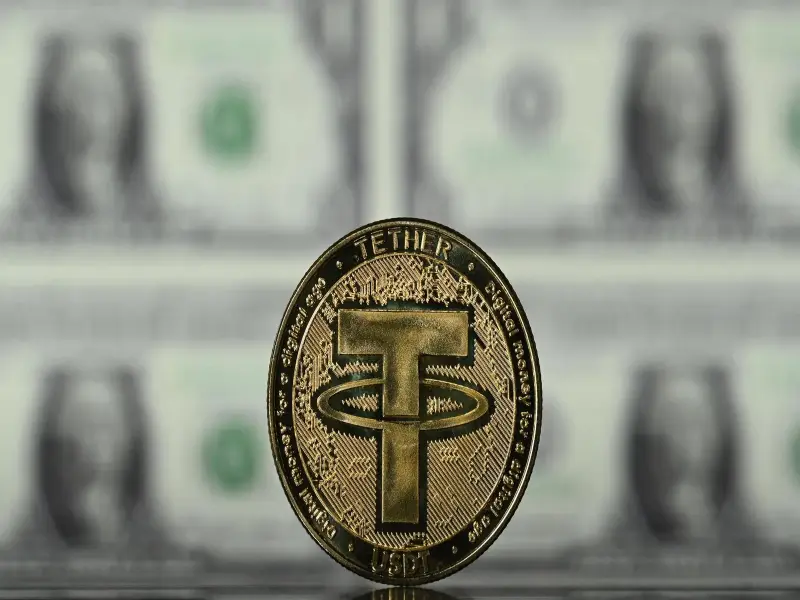
Tether (USDT) boasts an astonishing daily transaction volume that consistently reaches or even exceeds the $100 billion mark.
This staggering figure underscores Tether’s vital position as a primary choice for cryptocurrency enthusiasts and traders seeking a reliable and stable medium for conducting daily value transfers and engaging in the dynamic crypto market.
The substantial liquidity and widespread adoption of Tether make it a linchpin in the world of digital assets, enabling seamless transactions and fostering liquidity across various crypto exchanges and platforms.
The 80-Billion Mystery Of Tether
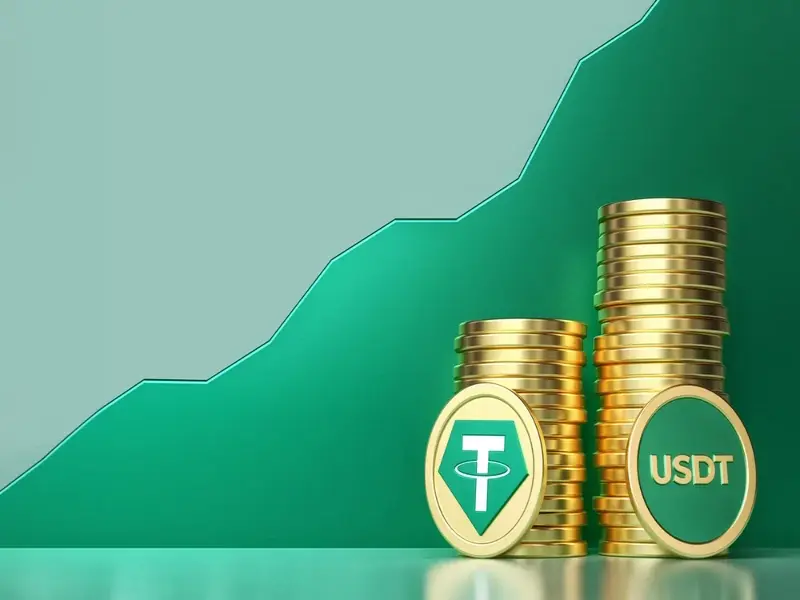
With a circulating supply surpassing $80 billion, Tether’s rapid issuance and circulation have sparked discussions about its potential impact on the crypto market and its broader implications.
The circulating supply of Tether (USDT) has achieved remarkable milestones in the world of cryptocurrencies, consistently surpassing all expectations.
With a vast and ever-expanding supply that frequently eclipses other stablecoins, Tether’s dominance in the crypto space is undeniable.
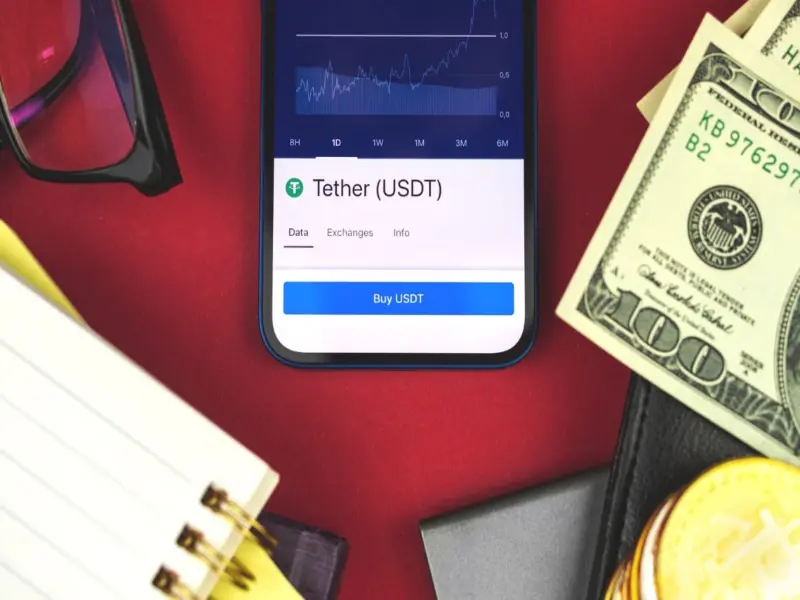
This significant circulating supply of USDT has become instrumental in providing liquidity, stability, and utility to traders and investors across the globe, further solidifying its position as a cornerstone of the digital asset ecosystem.
As the crypto market continues to evolve, Tether’s ability to maintain a substantial circulating supply plays a pivotal role in sustaining the industry’s growth and resilience.
Price Fluctuations Over Time Up To Over €1.0
Despite Tether’s assertion of stability, the price of USDT has witnessed significant fluctuations throughout its history.
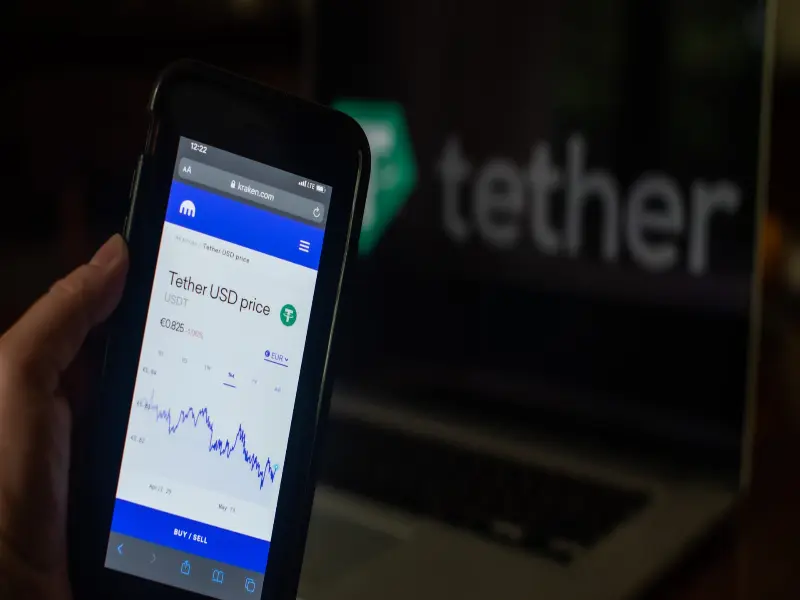
Thus, like any other cryptocurrency, thorough research is crucial before considering an investment, and it’s essential to bear in mind that making precise predictions about USDT’s price remains uncertain.
The price of Tether experienced a sharp decline in mid-2017, reaching its all-time low of €0.80 in January 2018. Emerging from the controversies surrounding Tether’s operational practices, the USDT value embarked on a gradual ascent, reaching €0.9 in the spring of 2020.
However, it encountered another downturn, hovering around the €0.8 mark in 2021.
Subsequently, the price rebounded once more and presently maintains its objective of hovering around the equivalent of 1 USD. As of now, USDT is traded at an average daily high of €1.0218 and an average daily low of €1.0129.
4 Blockchains, 1 Stablecoin

Tether is not limited to just 3blockchains (Ethereum, Tron, and Algorand); it operates on 4, including the recent addition of Avalanche (AVAX), demonstrating its commitment to blockchain diversity.
Now, Tether has expanded its presence to other blockchain networks EOS, Near, Liquid Network, Solana, Statemint, Tezos, Bitcoin Cash’s Standard Ledger Protocol, Statemine, Omni, and Polygon.
This allows users to transact and store Tether on different platforms, enhancing its accessibility and versatility.
1:1 Reserves Ratio And 4% Deviation Dilemma
Tether claims to have a 1-to-1 reserve ratio, meaning that for every Tether in circulation, there should be an equivalent amount of fiat currency held in reserves. This has been a subject of scrutiny and controversy, with ongoing debates about the transparency and legitimacy of Tether’s reserves.
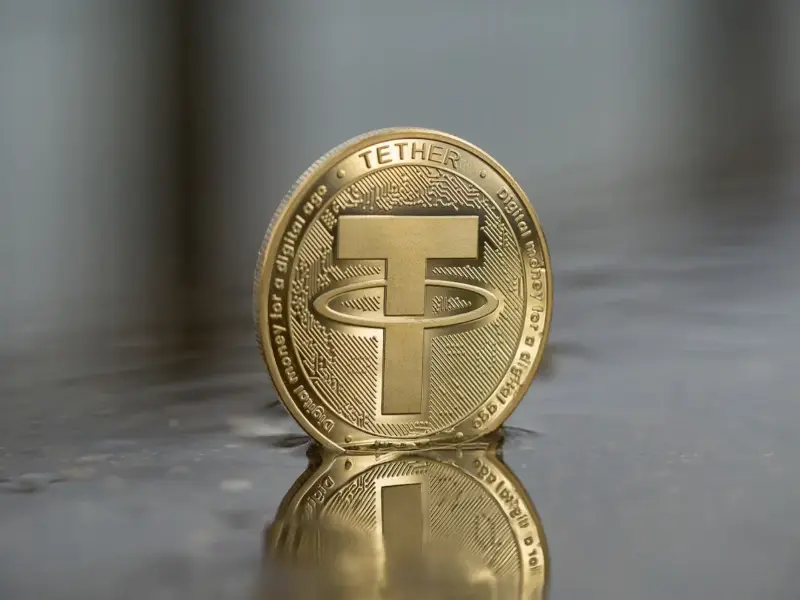
Tether tokens represent digital stablecoin assets meticulously tethered to real-world currencies at a 1:1 ratio. This anchoring is strategically designed to mitigate volatility and, as per Tether’s assertions, establish their tokens as a safer and more stable form of currency.
They serve as a reliable means for individual traders, businesses, crypto exchanges, wallets, and payment processors to facilitate seamless value transfers across various markets. Furthermore, Tether tokens find utility as a transactional currency on select platforms.
However, Tether, despite its efforts to maintain a 1:1 peg, occasionally experiences a 4% deviation from its peg, presenting traders with a unique challenge and opportunity.
40 Countries, 1 USDT

Tether’s widespread adoption extends to over 40 countries, emphasizing its global appeal and its role as a universal stablecoin transcending geographical boundaries.
While Tether is primarily pegged to the US dollar (USDT), there are also versions of Tether pegged to other fiat currencies in other countries, such as the Euro (EURT), Mexican pesos (MXNT), gold (XAUT), and the Chinese Yuan (CNYT). These variations provide users with more flexibility in their trading and hedging strategies.
99.9% Uptime – Tether’s Reliability
Tether boasts an impressive 99.9% uptime since its inception, showcasing its reliability as a stablecoin and its continuous availability for users across the globe.

Tether’s website provides real-time transparency on the issuance and redemption of tokens. Users can verify the amount of Tether in circulation and the corresponding reserves. This level of transparency aims to instill confidence and trust in the Tether ecosystem.
$30 Million Daily Birthday Gift In 5th Year
On its 5th birthday, Tether (USDT) witnessed an astonishing $30 million daily increase in market capitalization, as if receiving a generous birthday gift from the crypto market.
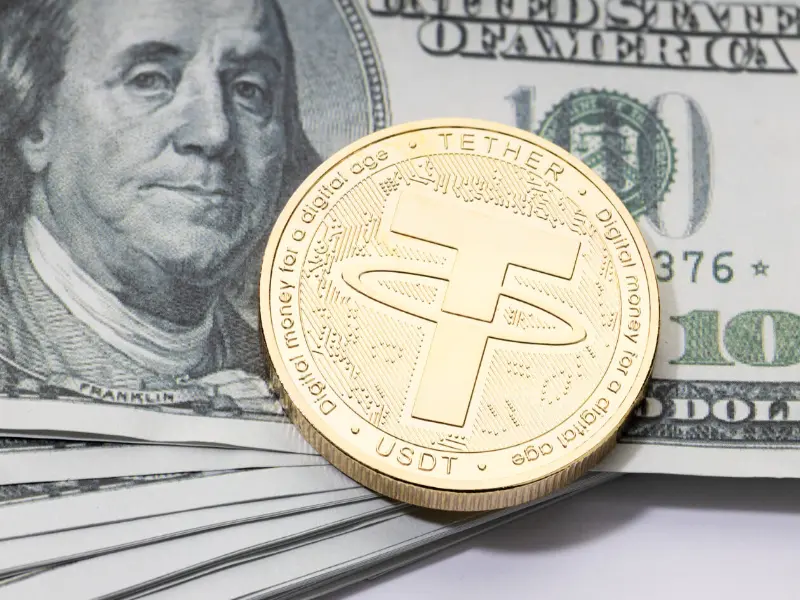
What started as a relatively modest stablecoin had grown into a financial juggernaut, with its market capitalization soaring into the billions of dollars.
This remarkable growth solidified Tether’s status as one of the most significant players in the crypto space, reflecting its integral role in facilitating value transfers and trading within the digital asset ecosystem.
Tether and the TerraUSD (UST) Meltdown In 2022
- The TerraUSD (UST) Crisis of 2022
In 2022, TerraUSD (UST), a stablecoin pegged to the U.S. dollar, triggered a crisis in the cryptocurrency market due to its unique reliance on an algorithm-based system instead of traditional cash reserves.

This innovative approach ultimately led to the collapse of TerraUSD and is considered one of the primary contributors to the sustained period of market downturn known as the “crypto winter.”
- The Algorithmic Pitfall
TerraUSD’s decision to rely on an algorithm, rather than holding cash reserves, left it vulnerable during a significant liquidity crunch early in 2022.
The stability of UST hinged on its association with a sister token called Luna, combined with a substantial reserve of Bitcoin, intended to maintain its 1-to-1 peg to the U.S. dollar.
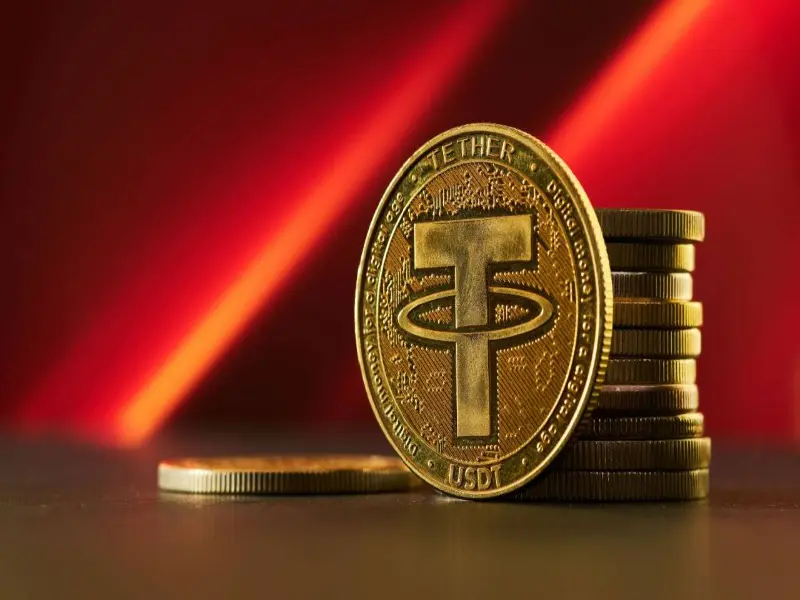
However, traders exploited the algorithm linked to Luna in pursuit of rapid profits, resulting in the abrupt crash of the entire TerraUSD system within a matter of days.
- Loss of Peg
The TerraUSD meltdown sent shockwaves throughout the cryptocurrency market, compounding existing challenges.
This event, often referred to as the Terra/Luna crash, had a cascading effect, driving down the price of Bitcoin and causing an estimated $300 billion in losses across the broader crypto landscape.
Tether Has Legal Battles For 2 Years
Tether Limited engaged in legal battles for over 2 years, culminating in a settlement with the New York Attorney General’s office in 2021, emphasizing the challenges faced by the stablecoin in regulatory environments.

From allegations of market manipulation to financial irregularities, these issues have influenced public perception and fueled debates about the stability and reliability of Tether.
Tether, once plagued by concerns about the transparency of its reserves and overall business practices, has now stated that each of its tokens is backed by its reserves, encompassing traditional currencies, and cash equivalents, and “may include other assets and receivables from loans made by Tether to third parties.”
However, there was a time when Tether’s lack of clarity regarding the composition of these reserves raised eyebrows.

Regulators closely examined Tether’s assertion of full dollar reserve backing, and while Tether has taken steps to address these issues with its ‘Transparency’ page, featuring a daily record of total assets and a detailed breakdown of reserves, some lingering doubts persist.
Ironically, these past controversies have had an impact on the price of USDT, driving it down to as low as $0.88 at one point—an unmistakable contradiction to Tether’s claims of maintaining stable token prices, impervious to external factors that typically trigger market volatility.
Tether’s Remarkable Resilience Over 7 Years
Tether (USDT) has exhibited unparalleled resilience throughout its 7-year journey in the cryptocurrency landscape.

Since its inception in 2014, Tether has weathered the storms of regulatory scrutiny, market volatility, and technological challenges, emerging as a stable and trusted entity in the crypto sphere.
This resilience is underscored by its unwavering commitment to maintaining a 1:1 peg with the US dollar, providing users with a reliable and secure means of transacting value in an otherwise turbulent market.
Over the years, Tether has continually adapted to the evolving needs of the crypto community, expanding its presence from a single blockchain to multiple platforms, including Ethereum and Tron, and embracing various standards such as ERC-20 and TRC-20.

Its steadfast commitment to transparency and regulatory compliance has further bolstered its resilience, ensuring that it remains a cornerstone of the cryptocurrency ecosystem, serving as a bridge between traditional finance and the digital frontier.
As Tether continues to innovate and evolve, its 7-year journey stands as a testament to its enduring strength and unwavering dedication to providing stability and liquidity in the ever-changing world of digital assets.
Monumental Achievement: 5 Trillion Transactions
In a historic milestone that underscores its significance in the world of digital finance, Tether (USDT) has recently achieved a monumental feat of processing 5 trillion transactions.
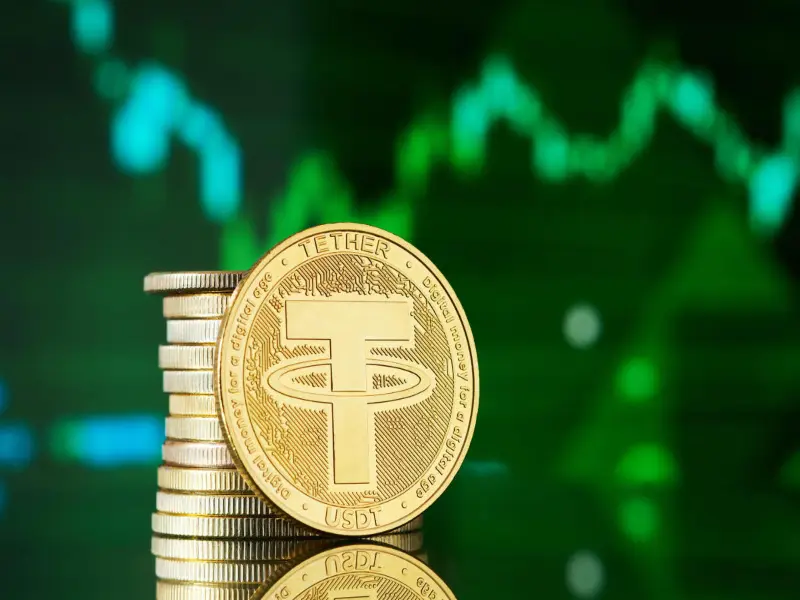
This extraordinary accomplishment not only demonstrates the unwavering trust placed in Tether but also highlights its indispensable role as a key player in the global cryptocurrency ecosystem.
The 5 trillion transaction milestone is a testament to Tether’s resilience, scalability, and adaptability.
As the crypto market evolves and matures, Tether remains at the forefront, providing users with the confidence and stability they need for a wide range of financial activities, from trading and investment to remittances and everyday transactions.
2 Billion USDT Daily Algorand Ballet
Tether (USDT) has expanded its presence by integrating with the Algorand blockchain, a move that has significantly contributed to the cryptocurrency’s versatility and utility. One notable aspect of Tether’s integration with Algorand is its impressive daily transaction volume on this blockchain.
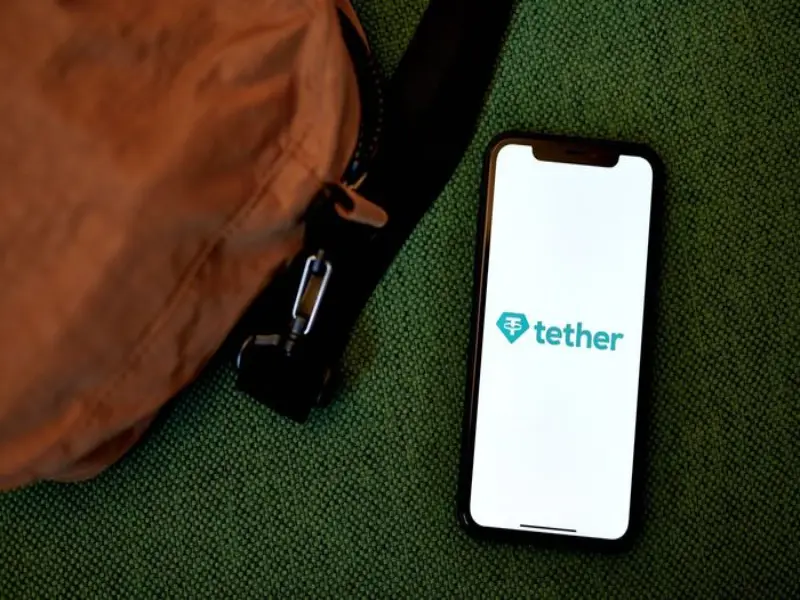
Tether’s Algorand blockchain witnessed a breathtaking performance with a daily transaction volume surpassing 2 billion USDT, showcasing the stablecoin’s prowess on its newest blockchain home.
The Algorand network, known for its high-speed and low-cost transactions, has enabled Tether to facilitate a substantial number of daily transactions efficiently.
60% Institutional Embrace
Tether (USDT) has cultivated a diverse and extensive user base since its inception. Its appeal spans across a spectrum of cryptocurrency enthusiasts, investors, and traders, each finding unique value in this stablecoin.

Over 60% of Tether’s user base comprises institutional investors, illustrating the growing trust and adoption of USDT in traditional financial circles.
Additionally, Tether offers a haven for those seeking a stable digital asset amid the often volatile world of cryptocurrencies, attracting risk-averse investors looking to safeguard their holdings.
300 Days of Legal Clarity
Tether provided increased legal clarity by releasing audit reports every 300 days, aiming to address concerns and build transparency, reflecting its commitment to regulatory compliance.
This extended period of regulatory transparency has brought a renewed sense of confidence and stability to the cryptocurrency market. Tether’s commitment to rigorous compliance measures, extensive audits, and regulatory engagement has set a new standard for transparency in the digital asset space.
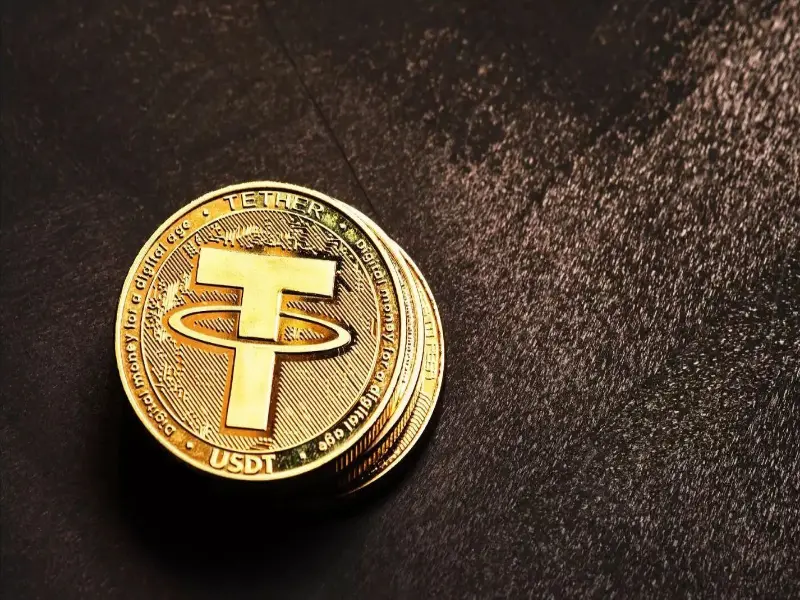
Tether’s commitment to regulatory compliance and its ongoing efforts to maintain transparency have set a precedent for the cryptocurrency industry.
Tethers Significant Role In The Crypto Market
Due to its stability and liquidity, Tether plays a crucial role in the cryptocurrency market. It acts as a bridge between traditional finance and the crypto world, bringing stability and ease of use to traders and investors.
Besides, Tether’s success has paved the way for the emergence of numerous other stablecoins. These cryptocurrencies aim to replicate Tether’s stability and provide additional options for users who prefer alternative stablecoin solutions.
Conclusion
In conclusion, Tether (USDT) is a widely recognized and utilized cryptocurrency that has established itself as a crucial player in the world of digital assets. As with any cryptocurrency, it’s essential to stay informed and exercise caution when using Tether. Understanding these facts about Tether is a valuable step in navigating the complex and evolving landscape of digital currencies.


